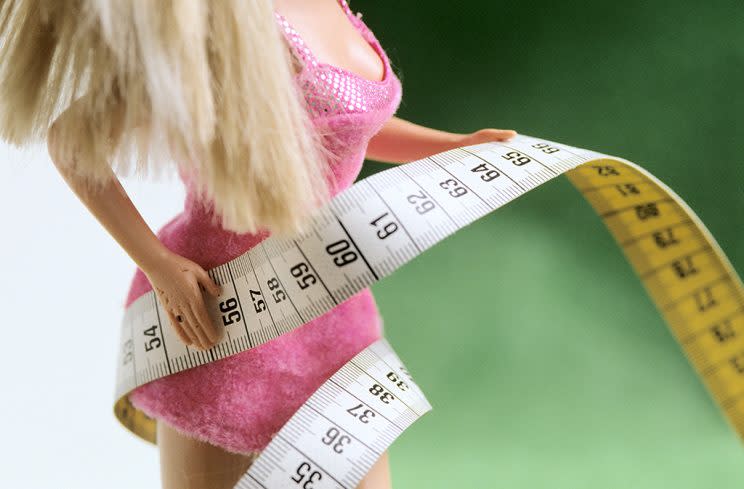Summer Camp Uses Barbie to Teach Girls About Having a Positive Body Image

The Girls Rock Math summer camp in Seattle aims to boost young girls’ confidence in the subject by making math fun and engaging. One way camp counselors have been doing that is by teaching the elementary school-age campers about math in ways they can relate to, such as by taking Barbie’s measurements, including her waist-to-hip ratio, to learn about fractions and comparing them to the dimensions of the average American woman.
Not surprisingly, that math-oriented exercise eventually led to conversations about body image that have been incorporated into the sessions.
After comparing the measurements of Barbie and a real woman, the camp counselors hold a discussion about whether Barbie, if she were real, would be able to run a race, ski, or work at a job all day. Several girls realized that, with those dimensions, Barbie couldn’t exercise or even hold her head up. As part of the session, campers also draw portraits using more realistic proportions and fractions.
“The first time I taught the camp we were really focused on the math aspects of it,” camp director Jessica Christianson told Seattle’s WMAZ News. “But what I would hear as the girls were working on their designs was that the girls they were drawing ‘looked too fat, looked too short, looked too tall, too skinny,’ and that would sort of trickle into their conversations about themselves.”
The camp counselors also ask the girls to think about why the manufacturer would create a doll that doesn’t look like a real woman and urge them to think critically about why they company is trying to sell this type of doll to them. “The more information you have now, I think, the better prepared you’ll be,” Christianson told WMAZ, referring to media’s influence on girls’ body image. “When your body does start changing or when you start to feel self-conscious, you can think — ‘That’s not real. Those are Photoshopped images’ — and you have that information.”
One camper said she’d prefer a doll that she could relate to. “Every body is amazing,” Maia, a fourth grader, told WMAZ. “Barbie makes you think that your body has to be one size, or else ‘no one is going to like me.’ I think that is one of the problems we have in America — that we’re so focused on looks and how people look.”
Added third-grader Kaitlin: “They should make something that looks more like a human than a skinny person because kids might think they should look like that, because [kids] don’t know they’re just making [Barbie] for money.”
After 57 years, the makers of Barbie finally listened to the wishes of both parents and little girls and launched a new line of dolls as part of their Barbie Fashionistas line to offer “girls choices that are more reflective of the world they see today.” The new, diverse line of dolls has seven different skin tones and different body types, from curvy to tall to petite. “We believe we have a responsibility to girls and parents to reflect a broader view of beauty,” Evelyn Mazzocco, senior vice president and global general manager of the Barbie brand, said in a statement.
Follow us on Instagram, Facebook, and Pinterest for nonstop inspiration delivered fresh to your feed, every day.

